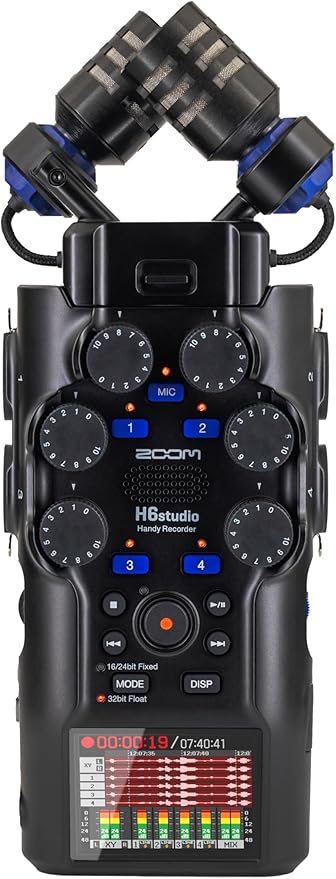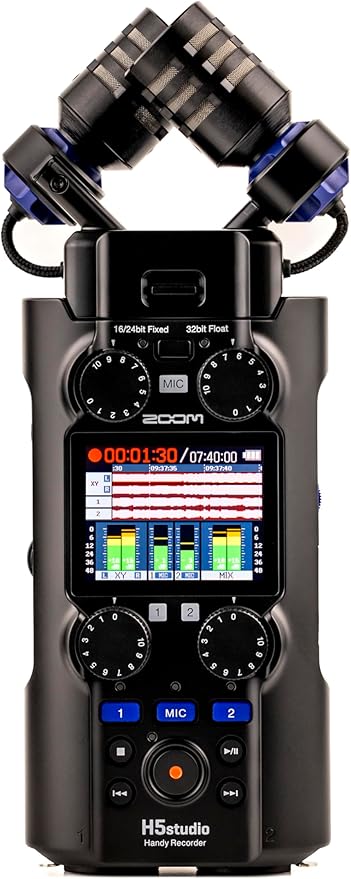In recent years, podcasting has evolved from a niche hobby into a global medium for storytelling, journalism, education, and entertainment. As production standards rise, so too does the demand for reliable, high-fidelity recording technologies. Among these, 32-bit floating-point (float) audio has emerged as a transformative development in digital sound capture. While traditionally reserved for high-end music and film production, 32-bit float is increasingly being adopted by podcasters seeking greater flexibility, resilience, and sonic accuracy.
Bit Depth and the Floating-Point Format
To understand the significance of 32-bit float, it is essential to first grasp the concept of bit depth in digital audio. Bit depth basically determines the resolution of each audio sample, directly influencing the dynamic range—the span between the softest and loudest sounds that can be accurately represented. Common formats include 16-bit which offers roughly 96 decibels (dB) of dynamic range, and 24-bit which extends this to approximately 144 dB. These formats use fixed-point representation, meaning that they have a hard ceiling at 0 dBFS (decibels relative to full scale). Any signal exceeding this threshold results in clipping, a form of distortion that permanently alters the waveform.
In contrast, 32-bit float uses a floating-point representation, similar to scientific notation. This format separates the numerical value into a mantissa and an exponent, allowing the system to scale amplitude values dynamically. The result is a theoretical dynamic range exceeding 1,500 dB—far beyond the limits of human hearing or analog circuitry. More importantly, 32-bit float can record signals that appear clipped and still preserve the underlying data, enabling full recovery during post-production.
Clipping Resistance and Gain Forgiveness
One of the most compelling advantages of 32-bit float recording is its resistance to clipping. In podcasting, where vocal dynamics can be unpredictable—laughter, shouting, or sudden emphasis—traditional fixed-point formats often struggle to maintain clean recordings. If the input gain is set too high, loud passages may clip and become unusable. Conversely, setting gain too low risks introducing noise or losing detail in quiet speech.
With 32-bit float, these concerns are largely mitigated. Even if a signal exceeds 0 dBFS during recording, the data is not lost. Engineers can simply reduce the gain in post-production, and the waveform is restored without distortion. This feature dramatically reduces the need for precise gain staging, allowing podcasters to focus on content rather than technical constraints. For solo creators or small teams without dedicated audio engineers, this flexibility is invaluable.
Capturing Nuance and Preserving Detail
Podcasting is a medium that relies heavily on vocal nuance. The subtleties of speech—intonation, breath, emotion—convey meaning and build intimacy with the listener. In this context, the extended dynamic range of 32-bit float is particularly beneficial. It enables the accurate capture of both whisper-quiet and forcefully loud passages without compromise.
This capability is especially useful in field recordings or interviews conducted in uncontrolled environments. Whether recording a soft-spoken guest in a quiet room or capturing spontaneous dialogue in a noisy café, 32-bit float ensures that all elements are preserved with clarity. The result is a more immersive and professional-sounding podcast, even when conditions are less than ideal.
Streamlining the Production Workflow
Beyond its technical merits, 32-bit float simplifies the recording workflow. In traditional setups, engineers must monitor input levels closely to avoid clipping or excessive noise. This process can be stressful, particularly during live recordings or multi-speaker sessions. With 32-bit float, the margin for error is significantly wider.
This simplification translates into time savings and reduced cognitive load. Podcasters can record with confidence, knowing that mistakes in gain settings can be corrected later. For creators juggling multiple roles—host, producer, editor—this flexibility enhances productivity and reduces the risk of having to re-record segments due to technical issues.
Post-Production Advantages
In post-production, 32-bit float offers unparalleled editing flexibility. Because the format retains full amplitude data, editors can apply gain adjustments, compression, equalization, and noise reduction without degrading the signal. This is particularly useful when working with multiple audio sources, such as remote interviews, ambient recordings, or archival clips.
Moreover, 32-bit float facilitates audio restoration. If a segment was recorded too loudly and appears clipped, tools within digital audio workstations (DAWs) can recover the peaks and reconstruct the waveform. This capability is not available in 16-bit or 24-bit formats, where clipping results in irreversible data loss. For podcasts that prioritize high production value—such as investigative journalism or scripted audio dramas—this resilience is a strategic asset.
Hardware and Software Considerations
While the benefits of 32-bit float are clear, its implementation requires compatible equipment. Not all audio recorders support this format, though manufacturers such as Zoom, Sound Devices, and Tascam have introduced models that do. Additionally, DAWs must be capable of importing and processing 32-bit float files. Fortunately, most modern platforms—including Adobe Audition, Reaper, Logic Pro, and Pro Tools—support this format natively.
Storage requirements for 32-bit float files are slightly higher than for 24-bit, but the difference is often negligible given current storage capacities. As the technology becomes more widespread, costs are expected to decrease, making it accessible to a broader range of creators.
Limitations and Practical Realities
Despite its advantages, 32-bit float is not a cure-all. It does not eliminate the need for quality microphones, proper mic placement, or acoustic treatment. Poor source audio will still sound poor, regardless of bit depth. Additionally, while 32-bit float prevents digital clipping, it cannot correct distortion introduced by overloaded analog components—such as preamps or microphones pushed beyond their limits.
There is also a misconception that 32-bit float inherently sounds better than 24-bit. In well-controlled environments with proper gain staging, the audible difference may be negligible. The true value of 32-bit float lies in its robustness and error tolerance, which become critical in unpredictable or high-pressure recording scenarios.
Key Takes
As podcasting continues to mature as a medium, the tools used to produce it must evolve accordingly. 32-bit float audio represents a significant advancement in digital recording, offering podcasters greater flexibility, reliability, and sonic fidelity. Its ability to capture a wide dynamic range, resist clipping, and simplify workflow makes it particularly well-suited to the demands of modern podcast production.
While not without limitations, the practical benefits of 32-bit float are substantial—especially for creators who value efficiency and quality. As the technology becomes more accessible, it is likely to become a standard feature in podcasting toolkits. For those committed to delivering compelling audio experiences, embracing 32-bit float is not merely a technical upgrade, but a strategic investment in creative freedom.



